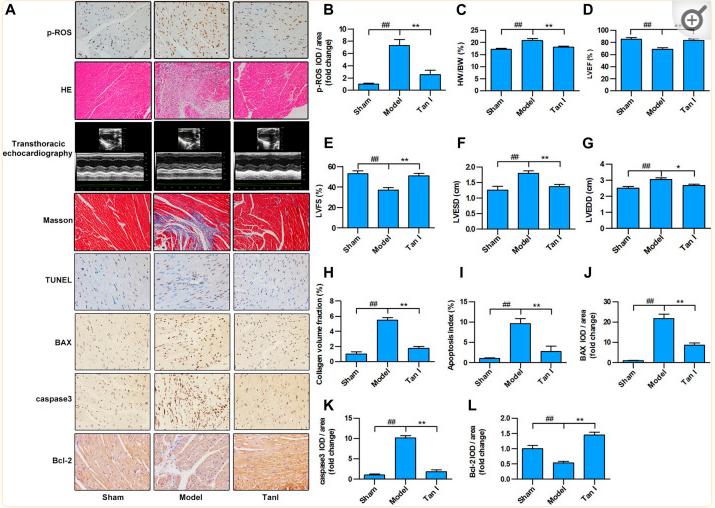Phospho-ROS (Tyr2114) Antibody - #AF8452
| 製品: | Phospho-ROS (Tyr2114) Antibody |
| カタログ: | AF8452 |
| タンパク質の説明: | Rabbit polyclonal antibody to Phospho-ROS (Tyr2114) |
| アプリケーション: | WB IHC |
| Cited expt.: | IHC |
| 反応性: | Human, Mouse, Rat |
| 予測: | Pig, Zebrafish, Bovine, Horse, Sheep, Chicken |
| 分子量: | 263KD; 264kD(Calculated). |
| ユニプロット: | P08922 |
| RRID: | AB_2840507 |
製品説明
*The optimal dilutions should be determined by the end user. For optimal experimental results, antibody reuse is not recommended.
*Tips:
WB: For western blot detection of denatured protein samples. IHC: For immunohistochemical detection of paraffin sections (IHC-p) or frozen sections (IHC-f) of tissue samples. IF/ICC: For immunofluorescence detection of cell samples. ELISA(peptide): For ELISA detection of antigenic peptide.
引用形式: Affinity Biosciences Cat# AF8452, RRID:AB_2840507.
折りたたみ/展開
c ros 1; c ros; c ros oncogene 1 receptor tyrosine kinase; c Ros receptor tyrosine kinase; c ros1; MCF 3; MCF3; Oncogene ROS; OTTHUMP00000017814; OTTHUMP00000017815; OTTHUMP00000040389; Proto oncogene c ros 1 protein; Proto oncogene c Ros; Proto oncogene tyrosine protein kinase ROS; Proto oncogene tyrosine protein kinase ROS precursor; Proto-oncogene c-Ros-1; Proto-oncogene tyrosine-protein kinase ROS; Receptor tyrosine kinase c ros oncogene 1; Ros 1; ROS 1C; ROS; ROS proto oncogene 1 , receptor tyrosine kinase; ROS_HUMAN; ROS1; ROS1C; Transmembrane tyrosine specific protein kinase; v ros avian UR2 sarcoma virus oncogene homolog 1; v ros UR2 sarcoma virus oncogene homolog 1;
免疫原
A synthesized peptide derived from human ROS around the phosphorylation site of Tyr2114.
- P08922 ROS1_HUMAN:
- Protein BLAST With
- NCBI/
- ExPASy/
- Uniprot
MKNIYCLIPKLVNFATLGCLWISVVQCTVLNSCLKSCVTNLGQQLDLGTPHNLSEPCIQGCHFWNSVDQKNCALKCRESCEVGCSSAEGAYEEEVLENADLPTAPFASSIGSHNMTLRWKSANFSGVKYIIQWKYAQLLGSWTYTKTVSRPSYVVKPLHPFTEYIFRVVWIFTAQLQLYSPPSPSYRTHPHGVPETAPLIRNIESSSPDTVEVSWDPPQFPGGPILGYNLRLISKNQKLDAGTQRTSFQFYSTLPNTIYRFSIAAVNEVGEGPEAESSITTSSSAVQQEEQWLFLSRKTSLRKRSLKHLVDEAHCLRLDAIYHNITGISVDVHQQIVYFSEGTLIWAKKAANMSDVSDLRIFYRGSGLISSISIDWLYQRMYFIMDELVCVCDLENCSNIEEITPPSISAPQKIVADSYNGYVFYLLRDGIYRADLPVPSGRCAEAVRIVESCTLKDFAIKPQAKRIIYFNDTAQVFMSTFLDGSASHLILPRIPFADVKSFACENNDFLVTDGKVIFQQDALSFNEFIVGCDLSHIEEFGFGNLVIFGSSSQLHPLPGRPQELSVLFGSHQALVQWKPPALAIGANVILISDIIELFELGPSAWQNWTYEVKVSTQDPPEVTHIFLNISGTMLNVPELQSAMKYKVSVRASSPKRPGPWSEPSVGTTLVPASEPPFIMAVKEDGLWSKPLNSFGPGEFLSSDIGNVSDMDWYNNSLYYSDTKGDVFVWLLNGTDISENYHLPSIAGAGALAFEWLGHFLYWAGKTYVIQRQSVLTGHTDIVTHVKLLVNDMVVDSVGGYLYWTTLYSVESTRLNGESSLVLQTQPWFSGKKVIALTLDLSDGLLYWLVQDSQCIHLYTAVLRGQSTGDTTITEFAAWSTSEISQNALMYYSGRLFWINGFRIITTQEIGQKTSVSVLEPARFNQFTIIQTSLKPLPGNFSFTPKVIPDSVQESSFRIEGNASSFQILWNGPPAVDWGVVFYSVEFSAHSKFLASEQHSLPVFTVEGLEPYALFNLSVTPYTYWGKGPKTSLSLRAPETVPSAPENPRIFILPSGKCCNKNEVVVEFRWNKPKHENGVLTKFEIFYNISNQSITNKTCEDWIAVNVTPSVMSFQLEGMSPRCFIAFQVRAFTSKGPGPYADVVKSTTSEINPFPHLITLLGNKIVFLDMDQNQVVWTFSAERVISAVCYTADNEMGYYAEGDSLFLLHLHNRSSSELFQDSLVFDITVITIDWISRHLYFALKESQNGMQVFDVDLEHKVKYPREVKIHNRNSTIISFSVYPLLSRLYWTEVSNFGYQMFYYSIISHTLHRILQPTATNQQNKRNQCSCNVTEFELSGAMAIDTSNLEKPLIYFAKAQEIWAMDLEGCQCWRVITVPAMLAGKTLVSLTVDGDLIYWIITAKDSTQIYQAKKGNGAIVSQVKALRSRHILAYSSVMQPFPDKAFLSLASDTVEPTILNATNTSLTIRLPLAKTNLTWYGITSPTPTYLVYYAEVNDRKNSSDLKYRILEFQDSIALIEDLQPFSTYMIQIAVKNYYSDPLEHLPPGKEIWGKTKNGVPEAVQLINTTVRSDTSLIISWRESHKPNGPKESVRYQLAISHLALIPETPLRQSEFPNGRLTLLVTRLSGGNIYVLKVLACHSEEMWCTESHPVTVEMFNTPEKPYSLVPENTSLQFNWKAPLNVNLIRFWVELQKWKYNEFYHVKTSCSQGPAYVCNITNLQPYTSYNVRVVVVYKTGENSTSLPESFKTKAGVPNKPGIPKLLEGSKNSIQWEKAEDNGCRITYYILEIRKSTSNNLQNQNLRWKMTFNGSCSSVCTWKSKNLKGIFQFRVVAANNLGFGEYSGISENIILVGDDFWIPETSFILTIIVGIFLVVTIPLTFVWHRRLKNQKSAKEGVTVLINEDKELAELRGLAAGVGLANACYAIHTLPTQEEIENLPAFPREKLTLRLLLGSGAFGEVYEGTAVDILGVGSGEIKVAVKTLKKGSTDQEKIEFLKEAHLMSKFNHPNILKQLGVCLLNEPQYIILELMEGGDLLTYLRKARMATFYGPLLTLVDLVDLCVDISKGCVYLERMHFIHRDLAARNCLVSVKDYTSPRIVKIGDFGLARDIYKNDYYRKRGEGLLPVRWMAPESLMDGIFTTQSDVWSFGILIWEILTLGHQPYPAHSNLDVLNYVQTGGRLEPPRNCPDDLWNLMTQCWAQEPDQRPTFHRIQDQLQLFRNFFLNSIYKSRDEANNSGVINESFEGEDGDVICLNSDDIMPVALMETKNREGLNYMVLATECGQGEEKSEGPLGSQESESCGLRKEEKEPHADKDFCQEKQVAYCPSGKPEGLNYACLTHSGYGDGSD
種類予測
Score>80(red) has high confidence and is suggested to be used for WB detection. *The prediction model is mainly based on the alignment of immunogen sequences, the results are for reference only, not as the basis of quality assurance.
High(score>80) Medium(80>score>50) Low(score<50) No confidence
研究背景
Orphan receptor tyrosine kinase (RTK) that plays a role in epithelial cell differentiation and regionalization of the proximal epididymal epithelium. May activate several downstream signaling pathways related to cell differentiation, proliferation, growth and survival including the PI3 kinase-mTOR signaling pathway. Mediates the phosphorylation of PTPN11, an activator of this pathway. May also phosphorylate and activate the transcription factor STAT3 to control anchorage-independent cell growth. Mediates the phosphorylation and the activation of VAV3, a guanine nucleotide exchange factor regulating cell morphology. May activate other downstream signaling proteins including AKT1, MAPK1, MAPK3, IRS1 and PLCG2.
Phosphorylated. Probably autophosphorylates. Phosphorylation at Tyr-2274 is required for the interaction with PTPN6 that mediates ROS1 dephosphorylation (By similarity). Phosphorylation at Tyr-2274 stimulates the kinase activity and the activation of the ERK1 signaling cascade (By similarity). Phosphorylation at Tyr-2274 and/or Tyr-2334 recruits PTPN11.
Cell membrane>Single-pass type I membrane protein.
Expressed in brain. Expression is increased in primary gliomas.
Belongs to the protein kinase superfamily. Tyr protein kinase family. Insulin receptor subfamily.
参考文献
Application: IHC Species: Mouse Sample: Heart tissue
Restrictive clause
Affinity Biosciences tests all products strictly. Citations are provided as a resource for additional applications that have not been validated by Affinity Biosciences. Please choose the appropriate format for each application and consult Materials and Methods sections for additional details about the use of any product in these publications.
For Research Use Only.
Not for use in diagnostic or therapeutic procedures. Not for resale. Not for distribution without written consent. Affinity Biosciences will not be held responsible for patent infringement or other violations that may occur with the use of our products. Affinity Biosciences, Affinity Biosciences Logo and all other trademarks are the property of Affinity Biosciences LTD.


